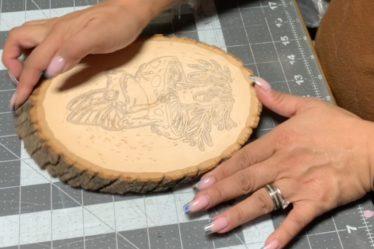
We wrote a blog post last year on creating your own website as an artist. You can find that post here. This post is mostly about maintaining your site.
This month we took a a look at our website, bzfurfur.com, with a critical eye and had to make some decisions about what works and what doesn’t. Two years ago, when we moved off Etsy and decided to launch our own website, we made a lot of decisions about the organization of the site. Not all of those decisions played out the way we had hoped. So we decided it was time for a tune-up. Just like you take your car to the mechanic to make sure everything is operating efficiently and you go to the doctors to get an annual checkup: if you don’t spend the necessary time to keep your website well maintained it is going, at best, be an inconvenience to your customers and, at worst, drive customers away from your products. So here are the top five things that we recommend you do to keep your website healthy:
Spruce up your site with these five tips
- Performance: A poor-performing site is going to be a strain on any user. Hi-res pictures are a wonderful way to showcase your products but they tend to be large. Remember that there are still a lot of potential customers who don’t have high-speed internet connections or who might be accessing your website on a mobile device. Are you using plugins on your site? Take a look at how those might be impacting performance. Go one by one and disable plugins from your site to determine if certain ones are consuming more memory/bandwidth and slowing down your site. Use tools like Google Lighthouse (https://developer.chrome.com/docs/lighthouse/overview) to get metrics around how quickly your site renders and try to boost those stats.
- Inventory: If you have been running your site for a long time it is very likely that your inventory is out of date. Whether that is old products that you no longer have in stock, incorrect amounts, or incomplete details. Often times we are heading to a market and we put a product up “just to get it in the POS system” without a decent quality product photo or limited product details. Now is a good time to go through your inventory and make sure everything is as up-to-date and accurate as possible.
- Search Engine Optimization: You want your site to show up on all the major search engines. Even if you took the time to optimize your site for search engines when you initially stood it up, the requirements for search engines change all the time. Make sure you have key words in the titles of all your pages, add meta descriptions, make sure you follow the guidelines for getting your pages indexed for google, getting your products listed on social platforms, and you are that you are reviewing best practices such as Google’s SEO Starter Guide https://developers.google.com/search/docs/fundamentals/seo-starter-guide
- Information Architecture: A website is only as good as the people who are using it. If your menus are cluttered, if items don’t show up in your search, or if the layout makes it difficult to navigate users are going to take one look at the site and head off elsewhere. Take the time to use your site: pretend you are a customer and search for something. Go through the checkout process. Ask friends/family to do the same and provide you with candid feedback. Take the feedback from your own experience as well as that of others and put together a strategy for how to improve the overall user experience to optimize it for connecting your customers and your product.
- Branding: If your site has undergone many changes your overall branding strategy may have gotten muddied over the years. Fonts, color schemes, logos, and styles could vary wildly across your site. Take this time to determine what those styles are and apply them consistently across all your pages. Make sure that font sizes for paragraphs, headings, navigation, etc are cohesive across all your pages. Think about this in terms of your verbiage as well. Does one page sound fun and quirky whereas another page sounds like something out of a corporate brochure. Use this time to give your website a consistent voice.
What’s next?
These are just a few tips. Maintaining your website is an ongoing process and you are never really done so come back to it frequently and make sure you are giving your users the best experience possible. Have your own suggestions for how to make your site great? Tag us @bz_furfur and, as always, stay unique.



